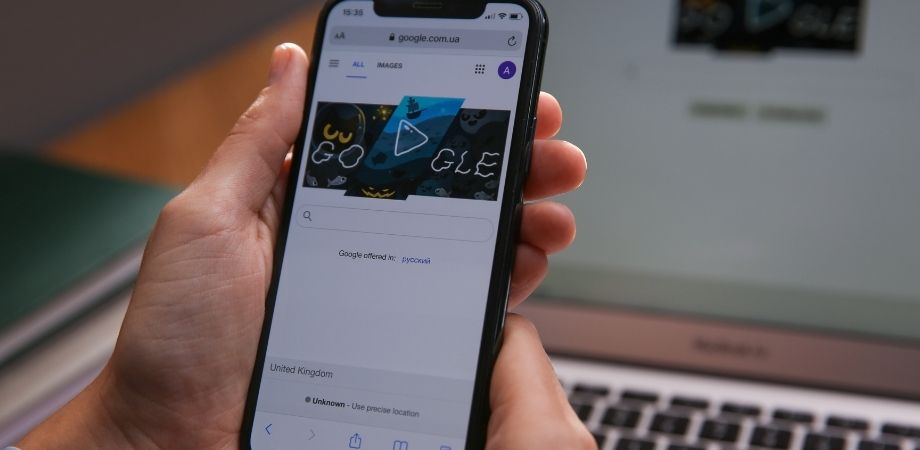In the expansive realm of the App Store, which spans 175 regions and boasts content availability in over 40 languages, the imperative of embracing iOS localization best practices for a truly seamless app experience cannot be overstated. The App Store’s staggering 8.1 billion app downloads in the closing quarter of 2022, coupled with iOS users exhibiting a commendable retention rate, underscores the pivotal role of localization in achieving app success. Developers, cognizant of the higher purchasing power wielded by iOS users, prioritize the localization of their apps for the Apple ecosystem, leveraging the built-in localization resources to enhance user experiences and drive retention rates upward. This article is a comprehensive exploration of iOS localization best practices and the nuances of mobile app localization, offering insightful guidance for developers aspiring to create immersive and culturally sensitive experiences for a diverse global audience.
What is iOS Localization?
iOS localization is a vital facet of app development, involving the adaptation of applications to specific languages and regions for a culturally sensitive user experience. This process extends beyond mere translation, encompassing the adjustment of text, dates, numbers, and visual elements. Comprising three key components—localizing text strings in code, app metadata on the App Store, and various resources—iOS localization ensures a consistent user experience across different locales. A comprehensive project includes optimizing content for cultures, adapting the UI, translating App Store descriptions, and creating new screenshots. This intricate process requires adherence to internationalization (i18n), making adjustments in the app to accommodate diverse languages.
In the realm of iOS development, a successful localization project extends beyond the translation of in-app content. It delves into optimizing content for distinct cultures, adapting the user interface to different languages or scripts, translating, and enhancing App Store descriptions, and crafting new App Store screenshots. Notably, certain technical tasks, including content extraction for translation and seamless integration into the app, contribute to the complexity of the localization process.
Why is It Important?
Investing in iOS app localization is crucial for a variety of impactful reasons. Firstly, it significantly enhances in-app engagement by providing a localized experience tailored to users’ language and culture, removing barriers, and fostering accessibility. This positively influences user retention, conversion, and satisfaction rates.
Additionally, localization plays a vital role in improving visibility and ranking in the App Store. By targeting local keywords strategically, you not only expand your user base faster but also efficiently tap into new markets. This approach facilitates growth and revenue acceleration.
Moreover, iOS app localization opens doors to multiple regions simultaneously, allowing for quicker expansion without starting from scratch. This strategic optimization for common languages enables access to larger market segments, contributing to faster revenue growth.
The potential for increased sales is another compelling reason to prioritize app localization. Connecting with users in their language creates stronger brand affinity, coupled with the evident revenue potential of the App Store.
Lastly, embracing iOS localization best practices provides a competitive advantage in the market. Even lesser-known companies can differentiate themselves by creating globally resonant digital products, contributing to increased leads, conversion opportunities, and higher revenue.
iOS Localization Steps

Delving into the specifics of iOS localization, the process involves key steps that remain consistent, albeit with minor variations depending on your chosen tools.
1. Preparing Your Files
In the process of iOS localization, a pivotal step is “Preparing Your Files,” where new string files are added for each targeted language in Xcode. This is essential to facilitate a seamless transition. By selecting languages in the project’s Navigator and specifying files for reference, you set the groundwork. Meticulous file preparation for translation, including exporting files using Xcode and organizing them in a dedicated folder, ensures adherence to iOS localization best practices. Users should selectively choose the original language in the Xcode UI. The outcome is an Xcode Localization Catalog containing essential files in various formats, optimizing the translation workflow for a multilingual app experience.
2. Localize Your Files
In the ‘Localize Your Files’ phase of iOS localization, subsequent to saving and formatting string elements, the crucial step involves strategically translating content. This process is guided by comprehensive market research to prioritize locales with significant growth potential, aligning with best practices in iOS localization. While manual translation is an option, utilizing specialized services enhances results, facilitating the direct upload of string files. Alternatively, within Xcode, efficient exporting of all strings is achieved through ‘Editor > Export for Localization.’
3. Integrate Your Localized Files
After completing the translation process in iOS localization, the pivotal “Integrate Your Localized Files” step involves seamlessly incorporating the translated text back into your app. Whether obtained from a specialized service or through an API, the downloaded translations, identified by language or locale codes, are effortlessly imported into Xcode using the Editor > Import Localizations… pathway. This streamlined process adheres to best practices in iOS localization, ensuring a smooth and automatic detection of new changes by Xcode, and facilitating the harmonious integration of localized content into your app.
iOS Localization Best Practices
Consider these practical tips to navigate potential challenges during the localization process of your app:
1. Optimize Your App Store Listing
As part of iOS localization best practices, a key step is optimizing your App Store listing when adapting your app for a new locale. This not only opens doors to a new user base but also ensures they recognize your app’s tailored experience for them. Professional translation is essential for your listing, serving as your app’s storefront where errors can harm your brand. Updating your listing involves adding localized text to screenshots and incorporating keywords that resonate with the preferences of your new audience.
2. Don’t Forget Sound and Vision
In the realm of iOS localization best practices, ensuring a seamless adaptation goes beyond text—don’t forget about sound and vision. Translating visual context requires precision to avoid confusion and inaccuracies. Solutions like Smartling, with features such as Optical Character Recognition (OCR) technology, automate this process, providing translators with crucial background information for higher-quality and faster translations. Beyond text, a truly native app experience involves translating audio, video, and graphics.
3. Don’t Skip the Comments
In iOS localization, don’t overlook the importance of adding comments for each string. Despite seeming like a chore, this small effort proves invaluable in the long run. Key details, such as linguistic context and technical information about the string’s appearance and function, save time and enhance accuracy during translation. Providing instructions, like flagging strings to be ignored, adds efficiency to the localization process, emphasizing the significance of concise commentary in iOS localization best practices.
4. Don’t Take Shortcuts
In the context of iOS localization, a key advice is to refrain from taking shortcuts. Unlike English, many languages lack the flexibility to invert sentence structures without altering meaning. Direct, word-for-word translations can lead to confusion, requiring the creation of multiple string versions and clear instructions for accurate and meaningful localization. This emphasizes the importance of a meticulous approach to ensure precise translations in accordance with iOS localization best practices.
5. Test Everything
In iOS localization best practices, the key directive is testing everything. Acknowledging the intricate nature of the localization process, where each string and language has its unique attributes, thorough testing becomes vital to avoid oversights. Utilizing tools like pseudo-localization in Xcode proves effective by replacing localizable elements with readable text in the base language but with different characters, revealing any missed elements. This brief yet robust testing strategy ensures a seamless localization process in alignment with iOS localization best practices and software localization.



